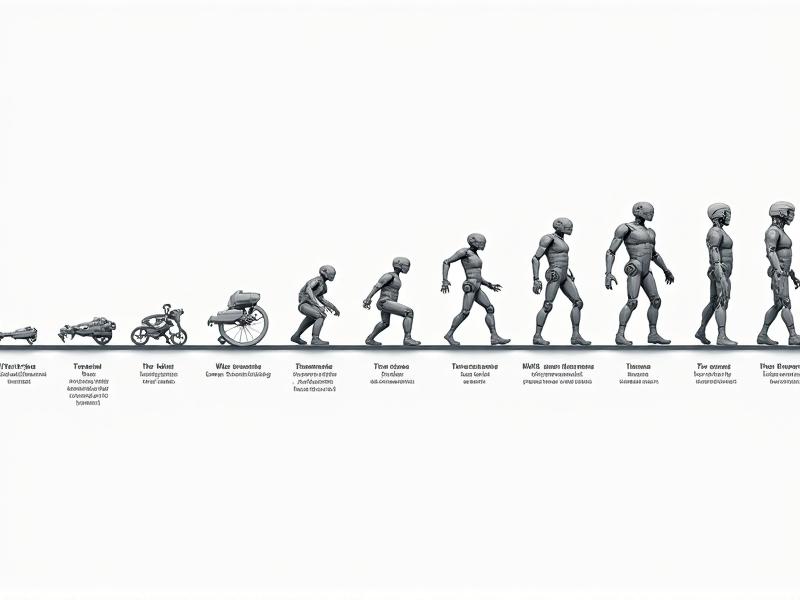Robotic Assistance for Quadriplegic Therapy
Introduction to Robotic Assistance in Quadriplegic Therapy
Robotic assistance is revolutionizing the field of physical therapy, particularly for individuals with quadriplegia. Quadriplegia, or tetraplegia, is a condition resulting in partial or total loss of use of all four limbs and the torso. Traditional therapy methods often require extensive manual effort from therapists and can be physically demanding for patients. Robotic systems, however, offer a promising alternative by providing consistent, precise, and customizable support. These systems can assist with repetitive movements, strength training, and even cognitive exercises, making therapy more accessible and effective. As technology advances, the integration of robotics into therapeutic practices is becoming increasingly sophisticated, offering new hope for improved quality of life for quadriplegic patients.

The Evolution of Robotic Therapy Devices
The journey of robotic therapy devices began with simple mechanical aids designed to assist with basic movements. Over the years, these devices have evolved into highly advanced systems equipped with artificial intelligence, sensors, and adaptive algorithms. Early models were limited in functionality, often focusing on single-joint movements. Today’s robotic systems, such as exoskeletons and robotic arms, can support complex, multi-joint exercises and even simulate real-world activities. Innovations like haptic feedback and virtual reality integration have further enhanced the therapeutic experience, making it more engaging and effective. This evolution reflects a broader trend in healthcare technology, where precision and personalization are key to improving patient outcomes.

How Robotic Assistance Enhances Motor Recovery
One of the primary goals of therapy for quadriplegic patients is motor recovery, and robotic assistance plays a crucial role in achieving this. Robotic devices can perform repetitive movements with high precision, helping to retrain neural pathways and improve muscle strength. These systems are often equipped with sensors that monitor progress in real-time, allowing therapists to adjust the intensity and type of exercises as needed. Additionally, robotic assistance can reduce the physical strain on therapists, enabling them to focus on more complex aspects of patient care. By providing consistent and controlled support, robotic devices help patients regain mobility and independence, significantly enhancing their quality of life.

Psychological Benefits of Robotic Therapy
Beyond physical recovery, robotic therapy offers significant psychological benefits for quadriplegic patients. The ability to engage in movement and exercise can boost self-esteem and reduce feelings of helplessness. Robotic systems often incorporate gamification elements, such as virtual reality environments, which make therapy sessions more enjoyable and motivating. These immersive experiences can distract patients from pain and discomfort, making it easier for them to complete their exercises. Furthermore, the progress tracked by robotic devices provides tangible evidence of improvement, which can be incredibly encouraging for patients. By addressing both the physical and emotional aspects of recovery, robotic therapy contributes to a more holistic healing process.
Challenges and Limitations of Robotic Assistance
Despite its many advantages, robotic assistance in quadriplegic therapy is not without challenges. High costs and limited accessibility are significant barriers, as many advanced robotic systems are expensive and not widely available. Additionally, some patients may find it difficult to adapt to the technology, particularly if they have limited experience with digital devices. There are also concerns about the potential for over-reliance on robotic assistance, which could hinder the development of natural motor skills. Furthermore, while robotic systems are highly precise, they may lack the intuitive understanding and adaptability of human therapists. Addressing these challenges requires ongoing research, innovation, and investment to make robotic therapy more accessible and effective for all patients.
Future Trends in Robotic Therapy for Quadriplegia
The future of robotic therapy for quadriplegia is bright, with several exciting trends on the horizon. Advances in artificial intelligence and machine learning are expected to make robotic systems even more adaptive and personalized. Wearable robotics, such as lightweight exoskeletons, are becoming more practical for everyday use, allowing patients to integrate therapy into their daily lives. Additionally, the integration of brain-computer interfaces (BCIs) holds promise for enabling patients to control robotic devices using their thoughts, further enhancing their independence. Collaborative robots, or cobots, are also being developed to work alongside human therapists, combining the strengths of both human and machine. As these technologies continue to evolve, they have the potential to transform the landscape of quadriplegic therapy, offering new possibilities for recovery and rehabilitation.
Ethical Considerations in Robotic Therapy
As robotic therapy becomes more prevalent, it is essential to address the ethical considerations associated with its use. Issues such as patient privacy, data security, and informed consent must be carefully managed, particularly when dealing with sensitive health information. There is also the question of equity, as access to advanced robotic therapy may be limited by socioeconomic factors. Additionally, the potential for reduced human interaction in therapy raises concerns about the emotional well-being of patients. It is crucial to strike a balance between leveraging the benefits of robotic assistance and maintaining the human touch that is so vital to patient care. Ethical guidelines and regulations will play a key role in ensuring that robotic therapy is used responsibly and equitably.
Case Studies: Success Stories in Robotic Therapy
Real-world examples highlight the transformative impact of robotic therapy on quadriplegic patients. One notable case involves a young man who regained the ability to feed himself after using a robotic arm for several months. Another success story features a woman who, with the help of an exoskeleton, was able to take her first steps in years. These case studies demonstrate the potential of robotic therapy to restore function and independence, even in cases where traditional methods have failed. They also underscore the importance of personalized treatment plans and the role of dedicated therapists in guiding patients through their recovery journey. By sharing these stories, we can inspire hope and encourage more patients to explore the possibilities of robotic therapy.
How to Choose the Right Robotic Therapy Device
Selecting the appropriate robotic therapy device is a critical step in ensuring effective treatment for quadriplegic patients. Factors to consider include the patient’s specific needs, the type of exercises required, and the device’s compatibility with existing therapy plans. It is essential to consult with healthcare professionals who have experience with robotic therapy to determine the best option. Additionally, patients and their families should research the available devices, considering factors such as cost, ease of use, and available support services. Trials and demonstrations can also be valuable in assessing how well a device meets the patient’s needs. By making an informed choice, patients can maximize the benefits of robotic therapy and enhance their recovery process.
The Role of Caregivers in Robotic Therapy
Caregivers play a vital role in the success of robotic therapy for quadriplegic patients. They provide emotional support, assist with daily activities, and help patients navigate the challenges of using robotic devices. Caregivers often work closely with therapists to ensure that exercises are performed correctly and consistently. They also play a key role in monitoring progress and providing feedback to healthcare professionals. For many patients, the presence of a trusted caregiver can make the difference between success and failure in their therapy journey. As robotic therapy becomes more common, it is essential to provide caregivers with the training and resources they need to support their loved ones effectively.
Conclusion: The Promise of Robotic Assistance in Quadriplegic Therapy
Robotic assistance represents a significant advancement in the field of quadriplegic therapy, offering new possibilities for recovery and rehabilitation. By providing precise, consistent, and customizable support, robotic devices help patients regain mobility, strength, and independence. The integration of advanced technologies such as artificial intelligence, virtual reality, and brain-computer interfaces further enhances the therapeutic experience. While challenges remain, ongoing research and innovation are paving the way for more accessible and effective robotic therapy solutions. As we continue to explore the potential of these technologies, we can look forward to a future where quadriplegic patients have greater opportunities for recovery and an improved quality of life.








